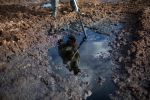S&P: CE Oaxaca Dos 'BBB-' Issue Level Rating Affirmed On Strong Operating And Financial Performance; Outlook Stable
The rating affirmation reflects the strong operating and financial performance of the 102 megawatt (MW) wind farm project since the commencement of operations in February 2012. It also takes into account our expectation that it will continue to show the same trend for the next 12 to 24 months.
The rating considers the following strengths: A 20-year power-purchase agreement (PPA) with a strong off-taker, CFE, which eliminates market risk, but not volume risk. A track record of wind availability, based on an assessment prepared by Alatec acting as Independent Engineer (IE) with on-site data collected over five years and almost 10 years of long-term reference data on or nearby the project. A 20-year operations and maintenance (O&M) contract, which matches the PPA's and the notes' term;O&M expenses lower than what was originally projected by the independent engineer (IE); andWidely-proved turbine technology; Acciona has used these turbines since 2004 with an average availability on its wind projects of 98%.The aforementioned strengths are partially offset by the fact that cash flows are directly dependent on energy production that relies on wind resources, which are seasonal and beyond management's control.
Construction Phase stand-alone credit profile (SACP): NA
The project has been in operation since February 2012.
The PPA between the project and CFE is a take-or-pay contract for 100% of the wind farm's net energy production. The price for CE Oaxaca II was originally set at $65 per megawatt hour for the first year, and is adjusted monthly for changes in the producer price index (PPI) of the United States of America. If the produced energy is lower than expected, there are no penalties, which we view as a credit positive.
CFE, as the national grid operator, bears the wheeling and delivery risk. We believe the PPA with CFE provides CE Oaxaca II with a strong contractual foundation and mitigates--in our view---market risk. However, volume risk remains because the project depends on on-site wind availability.
As for the 2015 O&M costs, these were lower than what was originally expected: $5.4 million versus $7.6 million budgeted. This trend has been observed since the project became operational in 2012. Therefore, given the positive track record, we are amending our assumption and expecting better operating income margins for the rest of the notes' tenor, with an average margin from 2016 onwards of 74% (previous margin of 70%). This change in assumptions is also based on (i) CE Oaxaca II's use of a proven technology, the Acciona Windpower AW 70 1.5 MW wind turbine; and (ii) potential economies of scale due to the fact that Acciona has other projects in the region with the same operator.
Moreover, during 2015, the average turbine availability was 99.48%, which was higher than our expectations of 96% availability. In addition, the average load factor, which depends on wind availability was 48.24% in 2015, which was higher than the estimated 42%. These two factors resulted in higher energy generation of 430,215 MWh in 2015 compared to the expectation of 375,719 MWh; i. e., a 14.5% increase. The growth allowed the project to generate revenues of $30.6 million during 2015, which were 12.9% higher than the expected amount under our base case. The latter posted a DSCR of 1.96x, better than our expected DSCR of 1.45x.
The stable outlook reflects our expectation that, in the next 24 months, CE Oaxaca II will generate stable revenues due to the characteristics of its PPA with CFE (which mitigates energy price volatility), the wind availability in the state of Oaxaca and in the region where the wind park is located, and the project's use of proven technology. The stable outlook also reflects our expectation that O&M expenses will continue to be lower than what the IE originally projected, as the project's sponsor manages several wind parks around the globe. The latter translates into minimum and average DSCRs of 1.47x and 1.50x, respectively.
We could raise the global scale ratings on CE Oaxaca II's debt issuance if the project continues to experience a higher yearly-amount of hours of wind compared to our base case assumptions and if we believe those conditions will remain in the future, which, coupled with lower O&M expenses than what was initially projected by the IE, could lead to an expected minimum DSCR of 1.60x or above.
A downgrade could occur if wind availability is below our base case assumptions and we believe those conditions will remain in the future, resulting in a decline of the DSCR below a minimum of 1.4x. A downgrade of CFE to a rating level below our issue rating on the project will result in a similar action on CE Oaxaca II.




Комментарии